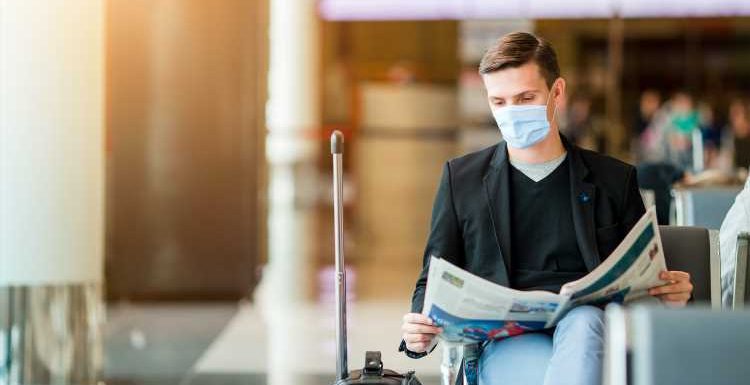
© Photo by Shutterstock
Planes, Trains, and . . . National Parks? Yep, Masks Now Required for Travel in U.S.
Photo by Shutterstock Wearing masks at U.S. airports will now be a must.
President Joe Biden signed two mask mandates this week, marking the first time the federal government has established an official directive on mask wearing during the coronavirus pandemic. The executive order on Promoting COVID-19 Safety in Domestic and International Travel was signed on Thursday, making it obligatory to wear a mask while traveling through the country’s airports and on airplanes, trains, public transportation, ships, and intercity buses.
The order directs governing agencies to take “immediate action” to require mask-wearing on the transport systems “to save lives and allow all Americans, including the millions of people employed in the transportation industry, to travel and work safely.”
The mask mandate for travel and transport came one day after Biden signed an Executive Order on Protecting the Federal Workforce and Requiring Mask-Wearing that applies to federal employees, buildings, and lands. Federal lands include the country’s National Park System, a network of 423 national parks, monuments, memorials, historic sites, and nature reserves.
Up until now, mask-wearing rules and enforcement have been left to a patchwork of state and local governments as well as to private enterprises, such as U.S. airlines, which have been requiring that all passengers wear masks since early May. While state and local agencies ultimately decide on the legislation and regulations within their jurisdictions, the new order offers greater backing from the federal level.
The order states that the federal government aims to “promptly identify and inform agencies of options to incentivize, support, and encourage widespread mask-wearing and physical distancing on public modes of transportation, consistent with CDC guidelines and applicable law.”
Previously, private businesses such as the airlines have been overseeing the policing and enforcement of their individual policies. After the majority of airlines began making masks a requirement for air travel, they then ramped up enforcement by revoking flying privileges for passengers who didn’t comply. Masks are also required by Amtrak and other public transport entities.
The mask mandate for travel was heralded by the Transport Workers Union (TWU), which represents more than 150,000 members in the airline, rail, transit, and service sectors.
“It’s about damn time our government lived up to its obligations to public health,” stated TWU president John Samuelsen, noting that a federal nationwide mask mandate is “a long overdue measure to protect workers.”
According to Samuelsen, more than 10 percent of the union’s membership has either contracted COVID-19, has had to quarantine after exposure to COVID-19, or has perished from the deadly virus.
“Our members have risked their lives for the past year to keep America moving—often without appropriate personal protective equipment to keep them safe while doing this essential work,” Samuelsen stated. TWU’s hope is that state and local governments follow the President’s lead and implement enforceable mask mandates for transportation systems in their jurisdictions.
The mask initiatives are part of the Biden administration’s larger strategy to move expeditiously to beat the COVID-19 pandemic “by relying on the best available data and science-based public health measures.”
According to the 200-page document, the country’s pandemic-fighting road map “starts with restoring public trust and mounting an aggressive, safe, and effective vaccination campaign.”
The White House plans to establish a COVID-19 Response Office to coordinate the government’s pandemic efforts and will create data dashboards to evaluate the country’s progress in the fight against COVID-19, which Biden admitted will not be an easy one.
“Beating this pandemic will be one of the most difficult operational challenges we have ever faced as a nation,” the president wrote in the opening letter of the new National Strategy for the COVID-19 Response and Pandemic Preparedness. But, he added, “I believe we are ready.”
>> Next: Our Picks for Face Masks to Buy—and the Latest Rules for Wearing Them
Source: Read Full Article










